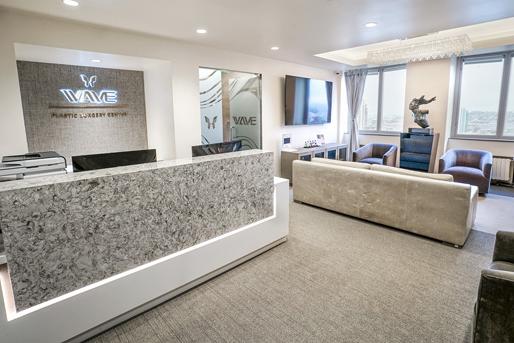Every year in the United States, an average of 262,000 people get facelifts, making it one of the country’s most popular cosmetic surgical procedures. A facelift can allow you to improve some of the issues that make you appear older than you are, including sagging skin, wrinkles, fine lines, facial fat loss, and much more.
If you’re considering getting a facelift, you may have many questions about the process and what you can expect from your results. Learn more about the procedure and get the answer to a widespread question: how long does a facelift last?
How Is a Facelift Done?
Facelift surgery, also called a rhytidectomy, helps address sagging facial tissues by lifting and firming them. Your skin starts to lose elasticity, and facial tissues lose volume with age. These two issues combine to create sagging skin in the lower face and loose skin in the neck area.
The exact procedure will depend on your goals and what your surgeon recommends. You will usually be under general anesthesia. Your surgeon will make the first few incisions and separate the skin from the rest of the tissues. That allows the team to reposition the underlying structure to help you achieve the desired results.
Your surgeon can remove excess skin and readjust the rest so you can get a firmer and more youthful contour.
How Long Does a Facelift Last: Factors To Consider
Aside from “How long does a facelift take?” this is one of the most common questions people have when considering whether to get the procedure. Many factors influence the answer.
Type of Procedure
The exact type of facelift you get will impact how long the results last. A standard facelift can offer results that last for anywhere from 10 to 20 years, while the results of a mini facelift can last a few years short of that.
How long does a lower facelift last? This kind of facelift typically lasts between 10 and 15 years.
Proper Maintenance
Following a rigorous skincare routine and doing everything in your surgeon’s guidelines for recovery can also significantly impact how long the results last. Staying out of the sun is particularly important because sun damage can age skin more rapidly.
Skin Condition and Genetics
Your unique genetics and skin condition also play a role. Some people naturally have more resilient skin than others, leading to longer-lasting results. Whether there’s a good amount of elasticity left in your skin is also crucial.
Younger individuals with better skin conditions tend to enjoy facelift results for longer. That’s why the average age facelift recommendations are between 40 and 60 years.
How Long Does It Take to Heal From a Facelift?
The process of healing from a facelift can be complex, and you need to have patience and follow all directions from your surgeon. During the first few days, you can expect to experience swelling, bruising, and discomfort, which you can manage with prescribed pain medication. The swelling will diminish after three to four days, but you’ll still experience lasting effects.
Most people feel well enough to do light work at the end of the second week of their recovery. You may have to go back to the surgeon during the third or fourth week to remove your stitches. You might experience some residual tightness and swelling, but you’ll likely feel more like yourself now.
After about a month, you will almost return to normal, allowing you to enjoy your new look. Some people continue to experience very light swelling and tightness, but this is usually only noticeable to you and not to others.
Does Plastic Surgery Last Forever? Average Age of Facelift
Your facelift won’t last forever, but you can look forward to many years of excellent results. Learn more about the exact procedure you’re planning on having.
Traditional Facelift — 5-10 years
A traditional facelift typically lasts between five and 10 years. That’s why it’s a good idea to consider a facelift as a preventive measure against aging. If your facelift age is around 40 when you start, you can expect to need touch-ups every 10 years or so. That will help you to avoid the most severe aging issues.
Skin-Only Facelift — 2-5 years
A skin-only facelift is one that only involves the skin, making it a more superficial option than some of the others. It doesn’t reposition or lift deeper layers of skin. That’s why results last between two and five years.
Mini Facelift — 5-7 years
Mini facelifts generally last between five and seven years. It’s a type of procedure that is less invasive than other options because it involves the lower half of the face. Many people do it as part of a touch-up after having a standard facelift.
SMAS Facelift — 10+ years
The SMAS facelift is a procedure that involves the superficial musculoaponeurotic system (SMAS). The SMAS is a layer of connective tissues that support your facial structures. These procedures can offer results that last between seven and 10 years.
MACS Facelift — 5-7 years
MACS facelifts are a great option that requires minimal tissue dissection and incisions while still offering results that last for years. You can expect them to last five to seven years before needing a touchup.
Deep Plane Facelift — 7-10 years
A deep plane facelift is one of the options that offers the most long-lasting results. That’s because it tightens all of the layers of your facial tissues, not just the skin. Not only do the results last longer, but they also tend to be more natural-looking.
Is a Facelift Worth It: Tips for Extending Your Results
Even though genetics and your skin’s condition impact how long your facelift results last, there are things you can do to improve and sustain the procedure’s outcome.
Keep Skin Clean and Well-Moisturized
During your recovery period and beyond, you want to pay close attention to your skin’s health. That means keeping your skin clean and using products that are not abrasive or damaging.
You also need to moisturize your skin since this can help prevent issues with skin inflammation. Moisturizing also encourages cell turnover, which is essential for keeping your skin looking radiant.
Avoid Sun Exposure and Use SPF Daily
Sun damage can cause premature aging, which impacts your results. Always wear sun protection, including sunscreen and protective clothing. Don’t forget your lips, since sun exposure can also dry and damage them.
Don’t Smoke
Smoking reduces blood flow and can increase the risk of complications after surgery, so if you want to get a facelift, consider quitting. That can help you to maintain the results for longer because smoking causes skin damage.
Maintain a Healthy Lifestyle
Gaining a lot of weight after a facelift can distort your results. You also want to exercise regularly since that increases circulation, bringing oxygen and nutrients to all your organs, including your skin. Strive to eat foods that are nutritious while avoiding sugar and alcohol as much as you can.
Follow Surgeon’s Post-Operative Care Plan
Your surgeon will provide detailed instructions on what to expect from the recovery process. You should follow these instructions to ensure the desired results. Pay attention to how you take care of the incisions and your skin — as well as activities you should and shouldn’t do at the various stages of the recovery process.
Consider Cosmetic Injectables Over Time
One way to avoid future signs of aging is to think about adding injectables. You can help prevent the development of new fine lines and wrinkles by using neuromodulators. Dermal fillers can also help keep your skin looking firm and voluminous.
Schedule a Facelift Consultation With Wave Plastic Surgery
A facelift typically lasts 5 to 10 years, although individual results may vary. Factors like age, genetics, lifestyle, and the surgical technique used can influence the duration of the results.
While it can provide a more youthful appearance, it doesn’t stop the natural aging process. Skincare maintenance and healthy habits can help prolong the effects of a facelift. Regular consultations with a plastic surgeon are essential for personalized guidance.If you’re considering getting a facelift, you can trust Wave Plastic Surgery. We offer a variety of facelift surgery options, including standard facelifts, endoscopic mid-facelifts, and a new non-surgical procedure called New Lift. We even offer an option we created exclusively for our Wave Plastic Surgery patients called the Wave Lift. Learn more about the many solutions we provide by contacting us today.




























